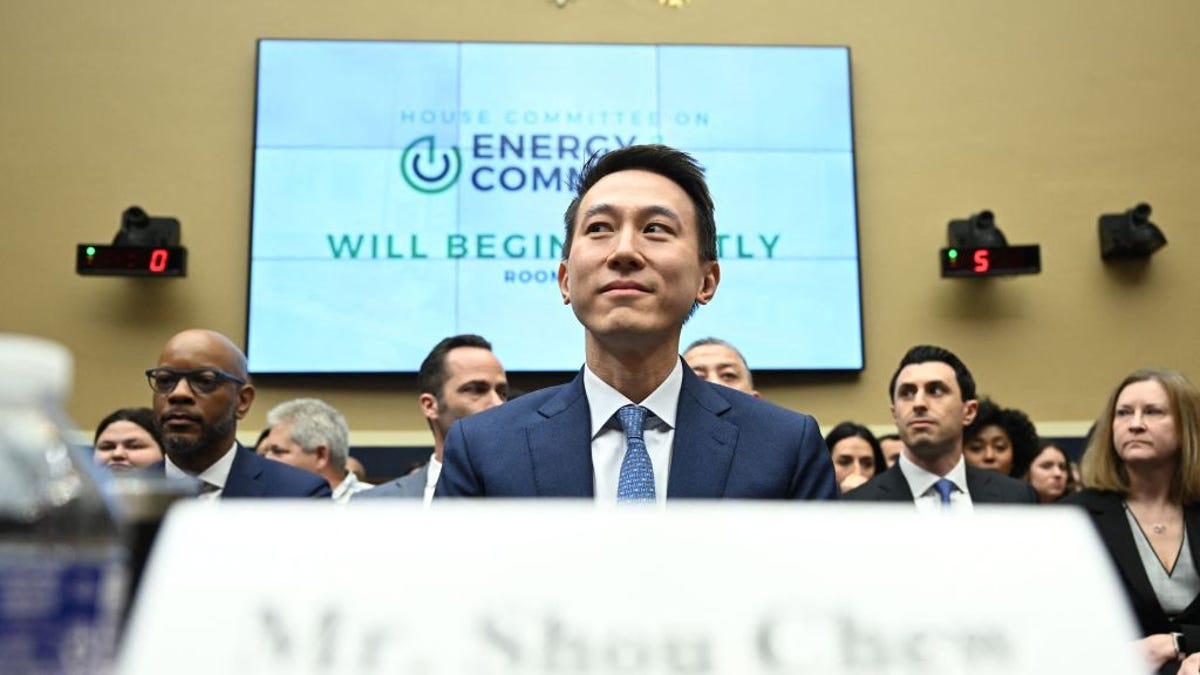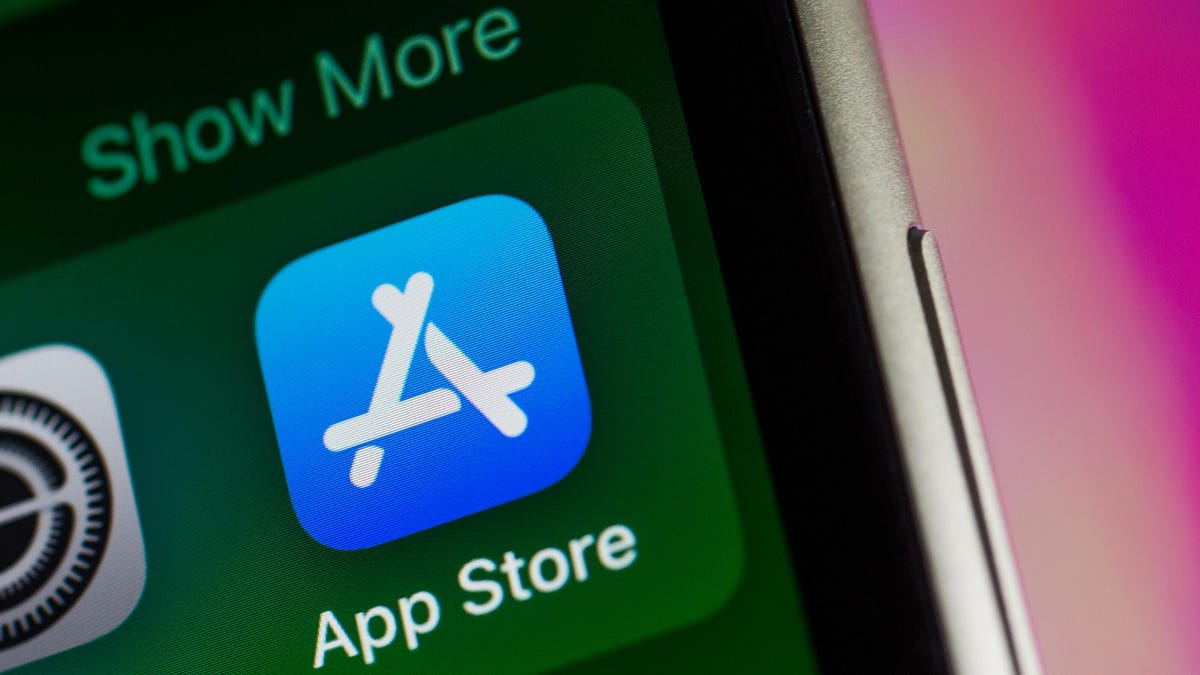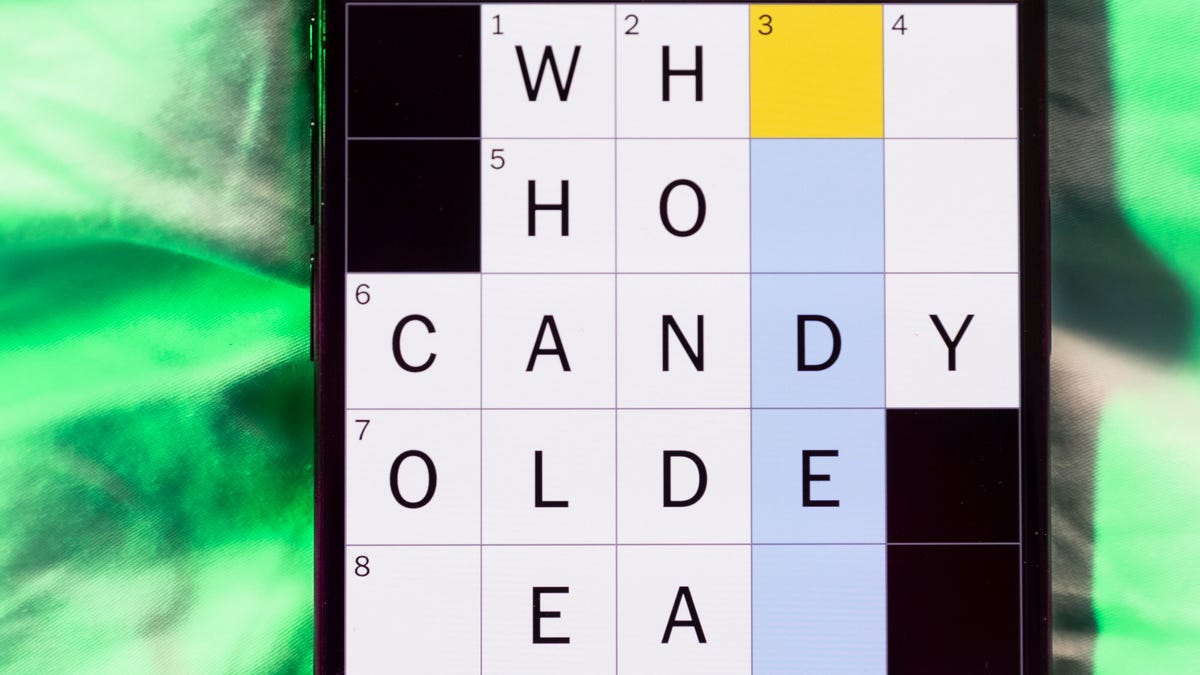Technologies
TikTok CEO Testifies Before Congress: Here Are Some of the Key Moments
Lawmakers grilled CEO Shou Chew about ties to China and what the app is doing to protect young people.

TikTok CEO Shou Chew on Thursday faced skeptical lawmakers in the US Congress to try to fend off calls to ban the hugely popular video app.
«There are more than 150 million Americans who love our platform, and we know we have a responsibility to protect them,» Chew said in remarks prepared for his appearance before the House Energy and Commerce Committee.
Earlier this month, the Biden administration demanded that ByteDance, the app’s Chinese parent company, sell its stake in the app or face a possible ban. Officials are concerned TikTok could be forced to share US user data with the Chinese government, posing a national security threat. In December, US lawmakers banned the app from government devices. Other countries, including Canada, EU member states and Taiwan, have taken similar steps.
Lawmakers on Thursday repeatedly questioned Chew about ByteDance’s ties to the Chinese government, expressing doubt TikTok would be able to protect US users’ data. They also alleged that TikTok could be used by the Chinese government to influence public opinion in the US.
Though the main thrust of the hearing focused on alleged ties to China, lawmakers also touched on other concerns, including data collection and protecting teens and young people from harmful content on TikTok.
Following the hearing, TikTok spokesperson Brooke Oberwetter said the hearing was «dominated by political grandstanding» and failed to address industry-wide issues.
«Also not mentioned today by members of the Committee: the livelihoods of the 5 million businesses on TikTok or the First Amendment implications of banning a platform loved by 150 million Americans,» said Oberwetter.
Here are some of the most interesting comments from the hearing:
Committee Chair Rep. Cathy McMorris Rodgers, in her opening statement: «Mr. Chew, you are here because the American people need the truth about the threat TikTok poses to our national and personal security. TikTok collects nearly every data point imaginable, from people’s location to what they type and copy, biometric data and more. … TikTok surveils us all. And the Chinese Communist Party is able to use this as a tool to manipulate America as a whole. We do not trust TikTok will ever embrace American values.»
She continued: «TikTok has repeatedly chosen a path for more control, more surveillance and more manipulation. Your platform should be banned. I expect today you’ll say anything to avoid this outcome.»
Chew, in his opening statement: «We have heard important concerns about the potential for unwanted foreign access to US data and potential manipulation of the TikTok US ecosystem. We have addressed them with real action. … That’s what we’ve been doing for the last two years, building what amounts to a firewall that seals off protected US user data from unauthorized foreign access. The bottom line is this: American data, stored on American soil, by an American company, overseen by American personnel. We call this initiative Project Texas.»
Chew, on legacy US data: «We have legacy US data sitting in our servers in Virginia and in Singapore. We’re deleting those and we expect that to be complete this year. When that is done, all protected US data will be under the protection of US law and under the control of the US led security team. This eliminates the concern that some of you have shared with me that TikTok user data can be subject to Chinese law.»
Rep. Buddy Carter, on harmful viral videos like the Milk Crate challenge: «Why is it that TikTok consistently fails to identify and moderate these kinds of harmful videos? Why is it that you allow this to go on? We’ve already heard … from parents who are here with us who have lost children.»
Chew responds: «This is a real industry challenge and we’re working on our…»
Carter: «No, no, it’s not industry. This is TikTok. We’re talking about TikTok. We’re talking about why is it that you can’t control this. … Tell me why this goes on.»
Rep. Darren Soto, on ByteDance ownership: «Mr. Chew, would TikTok be prepared to divest from ByteDance and Chinese Communist Party ties if the Department of Treasury instructed you all to do so?»
Chew responds: «I don’t think ownership is the issue here. With a lot of respect, American social companies don’t have a good track record with data privacy and user security. I mean look at Facebook and Cambridge analytica, just for one example.»
Rep. Neal Dunn asks Chew directly: «Has ByteDance spied on Americans at the direction of the Chinese Communist Party?»
Chew responds: «No.»
Dunn follows up, citing a Forbes article that ByteDance planned to use TikTok to monitor the location of US citizens: «I ask you again Mr. Chew, has ByteDance spied on American citizens?»
Chew responds: «I don’t think that spying is the right way to describe it. This is ultimately…(Dunn cuts off his response.)»
Rep. August Pfluger, on Project Texas: «Please rename your project. Texas is not the appropriate name. We stand for freedom and transparency and we don’t want your project.»
Technologies
Today’s NYT Strands Hints, Answers and Help for Dec. 25 #662
Here are hints and answers for the NYT Strands puzzle for Dec. 25, No. 662.

Looking for the most recent Strands answer? Click here for our daily Strands hints, as well as our daily answers and hints for The New York Times Mini Crossword, Wordle, Connections and Connections: Sports Edition puzzles.
Today’s NYT Strands puzzle has a holiday theme, and if you know a certain Christmas carol, you’ll quickly determine which words to hunt down. Some of the answers are difficult to unscramble, so if you need hints and answers, read on.
I go into depth about the rules for Strands in this story.
If you’re looking for today’s Wordle, Connections and Mini Crossword answers, you can visit CNET’s NYT puzzle hints page.
Read more: NYT Connections Turns 1: These Are the 5 Toughest Puzzles So Far
Hint for today’s Strands puzzle
Today’s Strands theme is: Carolers count.
If that doesn’t help you, here’s a clue: Five golden rings.
Clue words to unlock in-game hints
Your goal is to find hidden words that fit the puzzle’s theme. If you’re stuck, find any words you can. Every time you find three words of four letters or more, Strands will reveal one of the theme words. These are the words I used to get those hints but any words of four or more letters that you find will work:
- RIMS, HIMS, MARS, CHIME, CHIMES, MADS, DATE, DIAL, WAIL
Answers for today’s Strands puzzle
These are the answers that tie into the theme. The goal of the puzzle is to find them all, including the spangram, a theme word that reaches from one side of the puzzle to the other. When you have all of them (I originally thought there were always eight but learned that the number can vary), every letter on the board will be used. Here are the nonspangram answers:
- LORDS, MAIDS, SWANS, LADIES, PIPERS, DRUMMERS
Today’s Strands spangram
Today’s Strands spangram is CHRISTMASDAYS. To find it, look for the C that’s three letters down on the far-left row, and wind across.
Don’t miss any of our unbiased tech content and lab-based reviews. Add CNET as a preferred Google source.
Toughest Strands puzzles
Here are some of the Strands topics I’ve found to be the toughest in recent weeks.
#1: Dated slang, Jan. 21. Maybe you didn’t even use this lingo when it was cool. Toughest word: PHAT.
#2: Thar she blows! Jan.15. I guess marine biologists might ace this one. Toughest word: BALEEN or RIGHT.
#3: Off the hook, Jan. 9. Similar to the Jan. 15 puzzle in that it helps to know a lot about sea creatures. Sorry, Charlie. Toughest word: BIGEYE or SKIPJACK.
Technologies
Judge Blocks Texas App Store Age-Check Law
A preliminary injunction found the Texas law, set to begin Jan. 1, is «more likely than not unconstitutional.»

A new Texas state law set to take effect on Jan. 1 would have required app stores to implement age verification processes. But the law has been put on hold, at least temporarily, by a federal court judge.
As reported by the Texas Tribune, Senate Bill 2420, also known as the Texas App Store Accountability Act, is the subject of a temporary injunction issued by US District Judge Robert Pitman.
Pitman said in his decision that the law as written is broad, vague and «more likely than not unconstitutional.» However, he also wrote the court «recognizes the importance of ongoing efforts to better safeguard children when they are on their devices.»
Don’t miss any of our unbiased tech content and lab-based reviews. Add CNET as a preferred Google source.
The Texas law, signed into law by Governor Greg Abbott in May, requires app store operators — including Apple, Google, Nintendo, Steam and more — to build age verification processes for the storefronts and to only allow downloads to minors who obtain parental consent. The injunction is a ruling in an October lawsuit filed by the Computer & Communication Industry Association.
CCIA senior vice president Stephanie Joyce said in a statement, «This Order stops the Texas App Store Accountability Act from taking effect in order to preserve the First Amendment rights of app stores, app developers, parents, and younger internet users. It also protects parents’ inviolate right to use their own judgment in safeguarding their children online using the myriad tools our members provide.»
Other individuals and the advocacy group Students Engaged in Advancing Texas also filed suits over the law, the Texas Tribune reported.
App Store Accountability Act
The bill author, State Senator Angela Paxton, said the bill was meant to give parents «common sense tools to protect their kids and to survive court challenges by those who may have lesser priorities.»
The language of Texas Senate Bill 2420 does not only include mobile app stores from Apple or Google, but any «website, software application, or other electronic service that distributes software applications from the owner or developer of a software application to the user of a mobile device.»
By that definition, websites with links to browser games or mobile game consoles with download options would fall under the Texas law as written. The law also defines mobile devices as including phones and tablets, as well as any other handheld device capable of transmitting or storing information wirelessly.
The parental consent aspect of the law requires those under 18 to have an app store account affiliated with a parent or guardian to purchase or download applications.
Age verification elsewhere
In an effort to keep adult materials out of reach of minors and to protect children from potentially harmful content and interactions, tech companies have been compelled by law or through legal action to verify the age of users.
Roblox, which has a huge audience of minors, began rolling out stricter age verification after investigations and lawsuits hurt its reputation as a safe gaming space. Australia is perhaps the most large-scale example of a government restricting access to online content. In December, Australia began restricting social media access to those 16 and older. Reddit recently challenged that law.
In the US, age verification laws have primarily targeted adult sites. Texas already has a law on the books that requires adult sites to age-block their content. The Supreme Court upheld that law in a June ruling. The UK has also enacted age restriction rules for adult sites as have other US states.
Technologies
Today’s NYT Mini Crossword Answers for Thursday, Dec. 25
Here are the answers for The New York Times Mini Crossword for Dec. 25.

Looking for the most recent Mini Crossword answer? Click here for today’s Mini Crossword hints, as well as our daily answers and hints for The New York Times Wordle, Strands, Connections and Connections: Sports Edition puzzles.
Need some help with today’s Mini Crossword? Of course, there’s a very Christmassy clue involved. And once you solve the entire puzzle, look at the letters used in all the answers and see what they have in common. (5-Across will tell you!) Read on for all the answers. And if you could use some hints and guidance for daily solving, check out our Mini Crossword tips.
If you’re looking for today’s Wordle, Connections, Connections: Sports Edition and Strands answers, you can visit CNET’s NYT puzzle hints page.
Read more: Tips and Tricks for Solving The New York Times Mini Crossword
Let’s get to those Mini Crossword clues and answers.
Mini across clues and answers
1A clue: ___ King Cole, singer with the album «The Magic of Christmas»
Answer: NAT
4A clue: Body drawings, informally
Answer: TATS
5A clue: Letters to ___ (what this Mini was made with)
Answer: SANTA
6A clue: Huge fan, in slang
Answer: STAN
7A clue: «Illmatic» rapper
Answer: NAS
Mini down clues and answers
1D clue: Grandmothers, by another name
Answer: NANAS
2D clue: Abbr. before a name on a memo
Answer: ATTN
3D clue: Org. with long lines around the holidays
Answer: TSA
4D clue: «See ya later!»
Answer: TATA
5D clue: Govt.-issued ID
Answer: SSN
Don’t miss any of our unbiased tech content and lab-based reviews. Add CNET as a preferred Google source.
-

 Technologies3 года ago
Technologies3 года agoTech Companies Need to Be Held Accountable for Security, Experts Say
-

 Technologies3 года ago
Technologies3 года agoBest Handheld Game Console in 2023
-

 Technologies3 года ago
Technologies3 года agoTighten Up Your VR Game With the Best Head Straps for Quest 2
-

 Technologies4 года ago
Technologies4 года agoBlack Friday 2021: The best deals on TVs, headphones, kitchenware, and more
-

 Technologies4 года ago
Technologies4 года agoVerum, Wickr and Threema: next generation secured messengers
-

 Technologies4 года ago
Technologies4 года agoGoogle to require vaccinations as Silicon Valley rethinks return-to-office policies
-

 Technologies4 года ago
Technologies4 года agoOlivia Harlan Dekker for Verum Messenger
-

 Technologies4 года ago
Technologies4 года agoiPhone 13 event: How to watch Apple’s big announcement tomorrow
